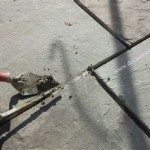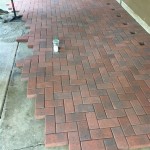How to Install Patio Stones on Grass
Installing patio stones directly on grass can offer an attractive and cost-effective landscaping solution. This method allows for creating pathways, seating areas, or decorative features without the extensive excavation and base preparation required for traditional patio installations. While seemingly straightforward, successfully installing patio stones on grass requires careful planning and execution to prevent issues like sinking, uneven surfaces, and weed growth. This article provides a step-by-step guide to ensure a durable and aesthetically pleasing outcome.
Preparing the Area for Patio Stone Installation
Proper preparation is critical for the longevity and stability of the patio stones. This stage involves marking the desired area, removing the existing grass, and leveling the soil beneath. Neglecting this process can lead to uneven surfaces, weed problems, and the premature deterioration of the patio.
The initial step involves outlining the patio's perimeter using marking paint, stakes, or a garden hose. This visual representation helps to define the project's scope and ensures that the desired dimensions are accurately maintained throughout the installation. Take precise measurements to ensure accurate planning. It is also crucial to consider the surrounding landscape and any existing features. Planning the layout carefully is a key determinant to achieving the desired aesthetic.
With the area marked, the next task involves removing the grass and topsoil. A sod cutter can significantly expedite this process, especially for larger areas. If a sod cutter is unavailable, a sharp spade or shovel can be used to remove the grass in sections. The depth of removal should be sufficient to accommodate the thickness of the patio stones, plus an additional inch or two for a leveling layer of sand or gravel. This ensures that the finished patio surface will be flush with, or slightly above, the surrounding grass level to prevent water pooling.
Once the grass and topsoil have been removed, leveling the exposed soil is essential. Inconsistencies in the soil's surface can lead to uneven patio stones, creating tripping hazards and detracting from the overall appearance. A level, a straight board, and a rake are useful tools for this task. Fill in any low spots with additional soil and compact the area thoroughly. A hand tamper or plate compactor can be used to achieve a firm, stable base. The degree of compaction required will vary based on the soil type, but a well-compacted base is vital.
Following compaction, a layer of leveling material, such as sand or fine gravel, should be applied. This layer helps to create a smooth, consistent surface for the patio stones to rest upon. Spread the sand or gravel evenly across the prepared area and use a level to ensure a uniform depth. Aim for a layer that is approximately 1-2 inches thick. Compacting this layer, too, will contribute to the project’s longevity.
Laying the Patio Stones
With the area prepared, the actual laying of the patio stones can commence. Careful placement and consistent spacing are important for achieving a professional-looking finish. Consider the desired pattern of the patio stones before beginning and plan accordingly. A variety of patterns can be used, from simple grid layouts to more intricate designs.
Start by placing the first patio stone in a corner or along a straight edge. Ensure that it is level and firmly seated in the prepared base. Use a rubber mallet to gently tap the stone into place. Check the levelness of the stone in all directions and adjust as necessary. As each subsequent stone is laid, maintain consistent spacing between them. Spacers, such as small pieces of wood or plastic, can be used to ensure uniform gaps. These gaps will later be filled with sand or gravel to lock the stones in place.
Throughout the laying process, periodically check the overall levelness of the patio surface. Use a long level to ensure that there are no significant dips or rises. Any discrepancies should be corrected by adjusting the underlying sand or gravel layer. Taking the time to address these issues early on will prevent more significant problems later.
When cutting patio stones to fit around edges or obstacles, a masonry saw or angle grinder with a diamond blade is recommended. Always wear appropriate safety gear, including eye protection and a dust mask, when cutting stone. Precise cuts are essential for achieving a clean, professional finish. Avoid leaving large gaps or using irregularly shaped pieces, as these can detract from the overall appearance of the patio.
Once all the patio stones have been laid, give the entire surface a final check for levelness and stability. Make any necessary adjustments to ensure that each stone is firmly seated and aligned with its neighbors. A well-laid patio surface will be smooth, even, and free of rocking or movement.
Finishing and Maintenance
The final steps involve filling the gaps between the patio stones with sand or gravel and implementing a maintenance plan to preserve the patio's appearance and structural integrity. Proper finishing and regular maintenance are key to ensuring that the patio remains attractive and functional for years to come.
The gaps between the patio stones should be filled with polymeric sand or gravel. Polymeric sand is preferred by many because it hardens when wet, helping to prevent weed growth and stabilize the stones. It is crucial to follow the manufacturer's instructions when applying polymeric sand. Typically, the sand is swept into the gaps, compacted, and then lightly watered to activate the bonding agents. Sweep excess sand off the stone surfaces before watering to prevent staining.
If using gravel, choose a fine gravel that will easily fill the gaps and provide good drainage. Sweep the gravel into the gaps using a broom or brush. Compact the gravel using a hand tamper or by walking over the surface. Replenish the gravel as needed to maintain a consistent level.
Regular maintenance is essential for preventing weed growth, preserving the patio's surface, and ensuring its long-term stability. Weeds can be controlled by applying a pre-emergent herbicide or by manually removing them as they appear. Avoid using harsh chemicals that could damage the patio stones or surrounding vegetation.
Sweep the patio surface regularly to remove dirt, leaves, and debris. This will help to prevent staining and maintain the stones' appearance. Periodically wash the patio with water and a mild detergent to remove stubborn dirt or stains. A pressure washer can be used, but exercise caution to avoid damaging the stones or washing away the joint filling material.
Inspect the patio regularly for any signs of sinking, shifting, or unevenness. Address these issues promptly to prevent them from worsening. This may involve adding more leveling material under the affected stones or re-compacting the base. By following these guidelines, the patio will remain a visually appealing and useful addition to any landscape through the years.

Diy Patio With Grass Between Pavers And A Fire Pit

How To Install Pavers Installing A Patio Step By Guide

How To Lay Paving Stones On Grass Hunker

How To Lay A Stepping Stone Walkway True Value

Diy Paver Artificial Turf Patio

How To Install Artificial Grass Between Pavers Paving Ideas Festival Turf

Dry Laying Slabs On Gravel Or Sand Instruction Kronos Ceramiche Floor Coverings In Porcelain Stoneware

How To Lay Artificial Grass Between Pavers Turf Factory

How To Make A Stepping Stone Walkway Lowe S

How To Set Flagstone In Grass Hunker
Related Posts








